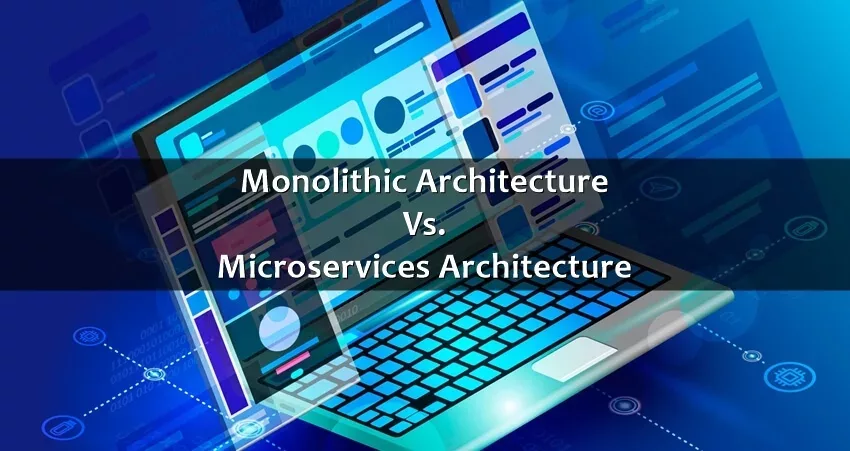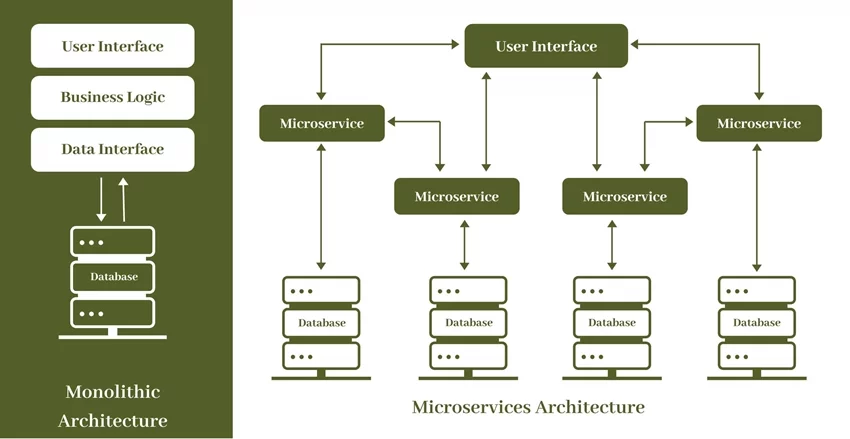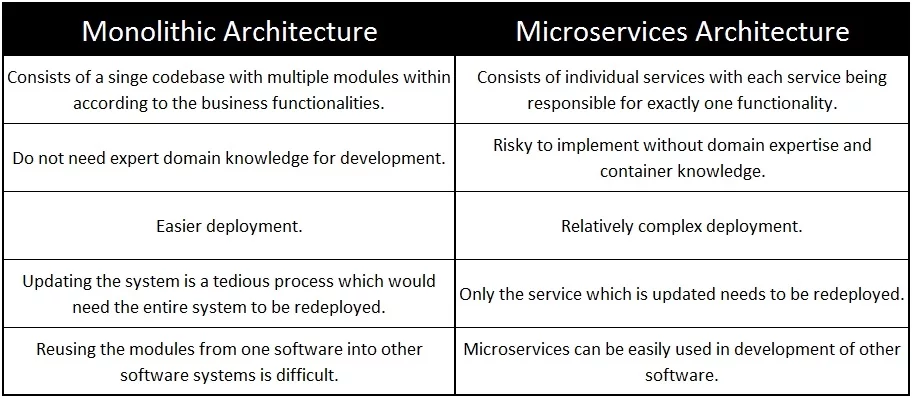The software industry has seen a drastic evolution in the last three decades. Apart from the new technologies, software development methods have transformed to a great extent.
It has gone through revolutionary changes to support the changing requirements of the industry.
Earlier, the software was designed to run on standalone systems. They were short programs that had one codebase. These followed the monolithic architecture for software design.
With the growing size of software, the codebase became increasingly unmanageable. The software was then divided into smaller parts.
These systems followed the microservice architecture. Today we will be looking into the difference between the two.
Monolithic systems are created in the same code base. This codebase is divided into multiple modules according to the business or technical features of the system.
With the increasing size of the software systems, the complexity of the systems keeps growing. This could make the codebase difficult to maintain.
Microservices architecture makes large systems easier to manage. It divides the systems into smaller units called services.
Each service handles only one part of the software system. The services communicate with each other to make the system work as a whole.
As mentioned earlier, monolithic systems have a single codebase. They are often divided into multiple tiers. And hence, they are sometimes also called as multi-tier systems.
Microservice architecture divides the system into multiple smaller systems called services. The idea here is to have these smaller, interconnected systems take care of one functionality of the software.
Monolithic architecture is a good choice when we have to build a small-sized software for a standalone system. Microservice architecture is preferred when we have to develop large enterprise applications.
Monolithic systems are easier to develop. They do not require any particular domain knowledge and expertise. Microservices are more challenging to develop.
It is risky to adopt microservice architecture without appropriate knowledge and skilled labor.
Having architecture knowledge alone is not enough while developing microservices. Domain expertise and container knowledge are mandatory.
Microservices offers a scalable architecture. These systems are easier to scale. You can add new services according to the increasing requirements of the system.
It is easier to integrate newer capabilities within the system. We do not need to worry about disturbing the existing system.
With monolithic systems, scaling them requires a lot of internal changes to the code. This could possibly disrupt the working of modules. Even the ones that have not been updated.
When it comes to deployment, monolithic systems are easier to deploy. They are deployed as just one WAR file.
When it comes to deploying microservices, the deployment is a more complex process.
The dependencies between the various services need to be checked before deployment. There should be a smooth transfer of information between the different services.
To update a monolithic software, you need to take down the entire software. You will then have to relaunch the updated version.
Since there is one codebase for the whole software, any minor change reflects on the entire software.
Updating microservices is somewhat simpler. The service that is updated is deployed while the remaining system is still working. We do not need to take down and relaunch the entire system for one update.
Reusing any part of the code of a monolithic system is a very tedious process. Even if the system is divided into modules, reusing the modules would include adhering to the exact same input and output that the module uses.
Microservices architecture provides much more reusable components in the form of services. Since each service takes care of one function of the software, reusing them while developing other systems is relatively easy.
Monolithic vs. Microservices Architecture’s Tabular Comparison
Enterprises can opt for either or both the architectures. This is based on their software needs and its underlying architecture requirements. A majority of the enterprises are moving towards microservices.
Yet, there are still some applications that work better on monolithic architecture. It all boils down to using the one option that provides the highest level of efficiency.
Also Read: 5 Pros and Cons of Microservices Explained



